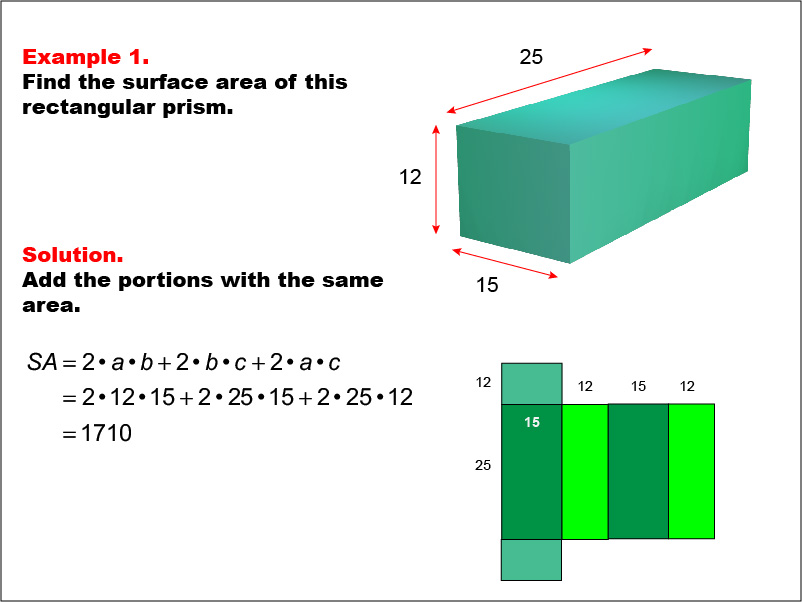
Display Title
Math Example--Area and Perimeter--Surface Area: Example 1
Display Title
Math Example--Area and Perimeter--Surface Area: Example 1

Topic
Surface Area
Description
This example demonstrates the calculation of surface area for a rectangular prism. The prism has dimensions of 25, 15, and 12 units. The surface area is determined by summing the areas of all faces, which is represented by the formula SA = 2ab + 2bc + 2ac. For this specific prism, the calculation yields a surface area of 1710 square units.
Understanding surface area is crucial in mathematics as it applies to various real-world scenarios, from packaging design to architecture. This collection of examples helps teach the concept by presenting diverse shapes and scenarios, allowing students to grasp the underlying principles and adapt them to different contexts.
Exposure to multiple worked-out examples is vital for students to fully comprehend surface area calculations. Each example reinforces the core concept while introducing nuances, helping students develop problem-solving skills and recognize patterns in geometric calculations.
Teacher's Script: Today, we're exploring surface area using a rectangular prism. As we work through this example, pay attention to how we break down the shape into its individual faces and combine their areas. This method will be useful for calculating surface areas of various 3D objects you'll encounter in the future.
For a complete collection of math examples related to Surface Area click on this link: Math Examples: Surface Area Collection.
| Common Core Standards | CCSS.MATH.CONTENT.7.G.B.6 |
|---|---|
| Grade Range | 6 - 8 |
| Curriculum Nodes |
Geometry • Surface Area and Volume • Surface Area |
| Copyright Year | 2013 |
| Keywords | surface area |